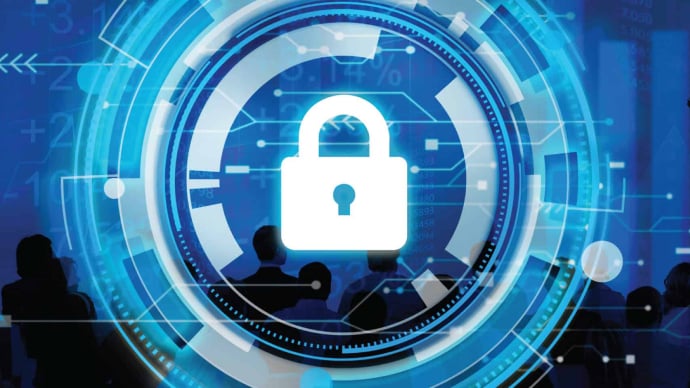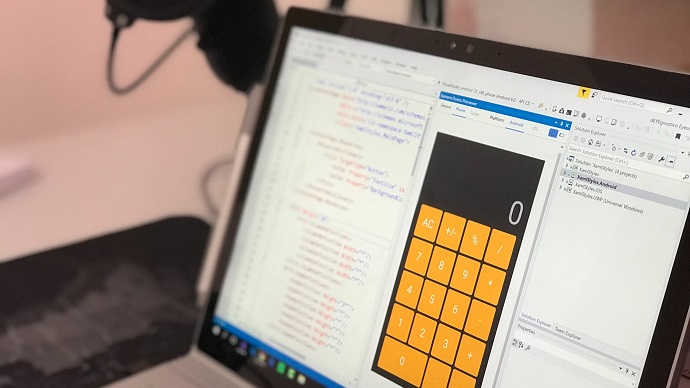
300-710: Securing Networks with Cisco Firepower (300-710 SNCF)
PDFs and exam guides are not so efficient, right? Prepare for your Cisco examination with our training course. The 300-710 course contains a complete batch of videos that will provide you with profound and thorough knowledge related to Cisco certification exam. Pass the Cisco 300-710 test with flying colors.

Curriculum for 300-710 Certification Video Course
| Name of Video | Time |
|---|---|
 1. Lecture-01:Introduction and Concept of Cisco Firepower. |
16:00 |
 2. Lecture-02:Install and Add Cisco FTD 6.2.3-83 on EVE NG. |
10:00 |
 3. Lecture-03:Install and Add Cisco FMC 6.2.3-83 on EVE NG. |
5:00 |
 4. Lecture-04:Introduction to FDM (Firepower Device Manager). |
8:00 |
 5. Lecture-05:Configure and Setup Cisco FTD Lab for FDM Access. |
11:00 |
 6. Lecture-06:Configure and Verify Cisco FTD Using FDM Lab. |
30:00 |
 7. Lecture-07:Firepower Device Manager Main Page walkthrough. |
10:00 |
 8. Lecture-08:FDM, System Settings, Management Access List. |
12:00 |
 9. Lecture-09:FDM, System Settings, Diagnostic Logging. |
16:00 |
 10. Lecture-10:FDM, System Settings, DHCP Server Configuration. |
13:00 |
 11. Lecture-11:FDM, System Settings, DNS Server Configuration. |
2:00 |
 12. Lecture-12:FDM, System Settings, Management Interface. |
1:00 |
 13. Lecture-13:FDM, System Settings, Device Hostname Configuration. |
2:00 |
 14. Lecture-14:FDM, System Settings, Network Time Protocol NTP. |
2:00 |
 15. Lecture-15:FDM, System Settings, HTTP Proxy Configuration. |
1:00 |
 16. Lecture-16:FDM, System Settings, Web Analytics Settings. |
1:00 |
 17. Lecture-17:FDM, System Settings, Reboot or Shutting Down. |
1:00 |
 18. Lecture-18:FDM, System Settings, URL Filtering Settings. |
2:00 |
 19. Lecture-19:FDM, Top Upper Right Conner Menu Walkthrough. |
10:00 |
 20. Lecture-20:Configure & Verify Objects Firepower Device Manager. |
10:00 |
 21. Lecture-21:Configure and Verify ACP Firepower Device Manager. |
11:00 |
 22. Lecture-22:FDM, Introduction & Walkthrough Monitoring Dashboards. |
14:00 |
 23. Lecture-23:FDM, Configure and Verify Main Page Device Groups. |
16:00 |
 24. Lecture-24:Configure and Setup Cisco FTD Lab for FMC Access. |
23:00 |
 25. Lecture-25:Firepower Threat Defense First Time Configuration. |
8:00 |
 26. Lecture-26:Firepower Management Center First Time Configuration. |
9:00 |
 27. Lecture-27:Activate Smart License Evaluation Mode in Cisco FMC. |
3:00 |
 28. Lecture-28:Register and Verify Cisco FTD Firewall to Cisco FMC. |
11:00 |
 29. Lecture-29:Cisco FTD Initial Working Lab Using the Cisco FMC. |
24:00 |
 30. Lecture-30:Cisco Firepower Management Center (FMC) Main Menu. |
5:00 |
 31. Lecture-31:Deploy Configuration and Message Center Details. |
24:00 |
 32. Lecture-32:Configure and Verify System Settings In Cisco FMC. |
35:00 |
 33. Lecture-33:Introduction and Concept of Access Control Policies. |
30:00 |
 34. Lecture-34:Configure and Verify HTTP Responses Pages in FMC. |
17:00 |
 35. Lecture-35:Introduction and Concept of URL Filtering in FTD. |
20:00 |
 36. Lecture-36:Configure and Verify Custom URLs Object Filtering. |
17:00 |
 37. Lecture-37:Configure and Verify URL and Web Category Filtering. |
23:00 |
 38. Lecture-38:Introduction and Concept of Security Intelligence. |
25:00 |
 39. Lecture-39:Configure and Verify Security Intelligence SI Lab. |
21:00 |
 40. Lecture-40:Security Intelligence Custom Blacklist & Whitelist. |
25:00 |
 41. Lecture-41:Security Intelligence Global Blacklist & Whitelist. |
17:00 |
 42. Lecture-42:Introduction and Concept of DNS Policy in Cisco FTD. |
25:00 |
 43. Lecture-43:Configure and Verify Domain Name System (DNS) Policy. |
51:00 |
 44. Lecture-44:Introduction and Concept of Pre-Filtering Policy FTD. |
14:00 |
 45. Lecture-45:Configure and Verify Pre-Filtering Policy in FTD Lab. |
26:00 |
 46. Lecture-46:Introduction and Concept of SSL Decryption Policy FTD. |
21:00 |
 47. Lecture-47:Configure and Verify SSL Decryption Policy FTD Lab. |
29:00 |
 48. Lecture-48:Introduction and Concept of Malware & File Policy. |
24:00 |
 49. Lecture-49:Configure and Verify Malware and File Policy Lab. |
37:00 |
 50. Lecture-50:Introduction and Concept of Network Discovery Policy. |
16:00 |
 51. Lecture-51:Configure and Verify Network Discovery Policy Lab. |
28:00 |
Cisco SNCF 300-710 Exam Dumps, Practice Test Questions
100% Latest & Updated Cisco SNCF 300-710 Practice Test Questions, Exam Dumps & Verified Answers!
30 Days Free Updates, Instant Download!
300-710 Premium Bundle

- Premium File: 393 Questions & Answers. Last update: Nov 4, 2025
- Training Course: 51 Video Lectures
- Study Guide: 588 Pages
- Latest Questions
- 100% Accurate Answers
- Fast Exam Updates
Cisco 300-710 Training Course
Want verified and proven knowledge for Securing Networks with Cisco Firepower (300-710 SNCF)? Believe it's easy when you have ExamSnap's Securing Networks with Cisco Firepower (300-710 SNCF) certification video training course by your side which along with our Cisco 300-710 Exam Dumps & Practice Test questions provide a complete solution to pass your exam Read More.
Mastering Cisco 300-710 SNCF Exam Preparation Guide for Success
300-710: Securing Networks with Cisco Firepower (SNCF) Practice Exam featuring high-quality, exam-focused questions designed to reflect the real certification test environment.
Course Overview
The Cisco 300-710: Securing Networks with Cisco Firepower (SNCF) training course is designed to equip IT professionals with the advanced skills needed to secure modern enterprise networks. This course provides in-depth knowledge of Cisco Firepower Threat Defense, Firepower Management Center, intrusion prevention, and advanced malware protection. Through a blend of theoretical concepts and hands-on labs, learners gain the expertise to configure, manage, and troubleshoot Cisco Firepower solutions effectively.
Participants will explore key areas such as access control policies, traffic analysis, system monitoring, VPN configurations, and integration with other security technologies. The course prepares learners for the Cisco 300-710 certification exam, which is a core requirement for the CCNP Security certification path.
By completing this program, professionals not only enhance their ability to defend against evolving cyber threats but also open up new career opportunities in roles such as network security engineer, systems engineer, and security analyst.
What you will learn from this course
Understanding Cisco Firepower architecture and its major components
Configuring Firepower Threat Defense devices for enterprise deployment
Implementing and managing security and access control policies
Performing deep traffic inspection and application visibility
Deploying intrusion prevention systems and managing signatures
Monitoring security events through Firepower Management Center
Troubleshooting system errors and optimizing performance
Applying best practices to secure enterprise networks against modern attacks
Learning Objectives
The Cisco 300-710 course is designed with structured objectives to ensure learners achieve technical competency as well as exam readiness. The primary learning objectives include:
Develop a comprehensive understanding of Firepower Threat Defense and how it integrates with existing network security infrastructures
Gain proficiency in configuring devices, policies, and inspection rules to control and secure network traffic
Learn to deploy intrusion prevention systems and enable advanced threat protection features to detect and block malicious activity
Build expertise in using Firepower Management Center for centralized monitoring, reporting, and system management
Strengthen troubleshooting skills for resolving common configuration and performance issues
Prepare with confidence for the Cisco 300-710 exam while developing practical skills valuable in enterprise roles
Course Description
The Cisco 300-710 training course, also known as Securing Networks with Cisco Firepower, is a specialized program designed to give learners the skills and knowledge required to deploy, configure, and manage Cisco Firepower solutions effectively. This training supports professionals in achieving the Cisco Certified Network Professional Security credential while providing hands-on expertise with next generation firewall technology and advanced intrusion prevention systems.
The course takes participants through the foundational aspects of Firepower architecture and gradually advances into complex configuration tasks. It covers the integration of Firepower Threat Defense with Firepower Management Center, traffic inspection, intrusion prevention, and secure policy management. Learners are guided through real-world scenarios to understand how these technologies mitigate evolving cyber threats within enterprise environments.
Cisco 300-710 emphasizes practical skills combined with conceptual clarity. Learners gain the ability to analyze security incidents, enforce compliance, and troubleshoot system issues effectively. With enterprise networks facing new security challenges daily, this course ensures professionals can proactively defend critical systems while preparing for the certification exam that validates their expertise.
Target Audience
This course is intended for IT professionals, engineers, and security specialists who are responsible for managing enterprise security solutions. The Cisco 300-710 training is best suited for:
Network security engineers seeking advanced expertise in Cisco Firepower solutions
Systems engineers who design and implement enterprise infrastructure requiring advanced protection
IT support personnel who provide operational support for security systems and need a deep understanding of Firepower
Security specialists working toward Cisco’s professional certifications such as CCNP Security
Professionals aiming to advance their career by mastering enterprise-grade security tools and techniques
Requirements
Although the Cisco 300-710 training course is comprehensive, learners will benefit most if they already possess certain foundational knowledge and skills. The requirements for this course include:
Familiarity with networking fundamentals including IP addressing, routing, and switching
Understanding of common security principles such as access control and encryption
Awareness of how data flows across enterprise networks and the need for traffic inspection
Basic hands-on experience with Cisco devices or equivalent knowledge from previous training
Prerequisites
In addition to general networking knowledge, specific prerequisites are recommended for participants enrolling in this course:
Prior exposure to security technologies including firewalls, VPNs, and intrusion detection systems
Familiarity with Cisco ASA concepts or foundational Cisco Firepower knowledge
Basic experience in configuring network devices using graphical interfaces or command-line tools
Understanding of enterprise security requirements and exposure to real-world scenarios of threat mitigation
Introduction to Cisco 300-710 and Network Security
Modern enterprises face increasingly complex threats that target sensitive data, business continuity, and network integrity. Traditional perimeter-based defenses are no longer adequate to handle sophisticated attacks that combine advanced malware, social engineering, and zero-day exploits. Cisco developed Firepower Threat Defense as a unified solution that integrates firewall, intrusion prevention, and advanced malware protection to address these challenges.
The Cisco 300-710 exam, associated with the Securing Networks with Cisco Firepower course, validates the ability of professionals to configure and manage Firepower Threat Defense. This includes implementing access policies, deploying intrusion prevention, and maintaining centralized monitoring with Firepower Management Center. The course ensures that participants can manage these technologies effectively while aligning with enterprise security requirements.
Understanding Cisco Firepower Technology
Cisco Firepower is a next generation security platform designed to provide deep visibility and control over network traffic. It combines multiple security functions into a single solution, reducing complexity and improving defense capabilities. The technology integrates features such as advanced malware protection, intrusion prevention, and application visibility to create a layered defense model.
Firepower Threat Defense is the software that runs on Cisco’s Firepower appliances, delivering both firewall and intrusion prevention capabilities. Firepower Management Center acts as the centralized control platform that administrators use to configure, monitor, and troubleshoot Firepower devices across an enterprise. By unifying these components, organizations can streamline their security operations while maintaining high levels of protection.
Importance of Securing Enterprise Environments
Enterprises today rely on digital infrastructures for nearly every business process, from communication and data management to customer engagement and financial operations. With such dependence on technology, security breaches can cause significant financial and reputational damage. Attacks such as ransomware, phishing campaigns, and data exfiltration have become more targeted and damaging.
Cisco Firepower provides a defense-in-depth approach that helps organizations stay ahead of attackers. By combining firewall policies, intrusion prevention, malware detection, and centralized event monitoring, security teams can proactively detect, block, and respond to threats. The Cisco 300-710 course ensures that professionals can configure and operate these defenses effectively, aligning security practices with business goals.
Overview of Firepower Threat Defense Architecture
Firepower Threat Defense integrates traditional firewall functionality with advanced intrusion prevention. It offers features such as stateful inspection, application-layer control, and deep packet inspection. The architecture is designed to handle high volumes of traffic while maintaining granular visibility into applications, users, and devices.
The Firepower architecture is modular, meaning administrators can enable or disable features as needed depending on the enterprise environment. Core components include access control policies, intrusion prevention policies, malware protection, and logging capabilities. The training ensures participants understand how to deploy and configure these components for maximum effectiveness.
Basics of Firepower Management Center
Firepower Management Center is the central management console used to administer Firepower devices. It provides a single interface for policy configuration, event monitoring, and system reporting. Through FMC, administrators can view real-time data on network traffic, analyze intrusion events, and adjust policies to respond to emerging threats.
The Cisco 300-710 course devotes significant attention to FMC because of its role in enterprise security management. Learners gain practical experience with configuring access control policies, deploying intrusion prevention signatures, and monitoring events through FMC dashboards. By mastering this tool, professionals are equipped to manage complex environments with multiple Firepower devices efficiently.
Hands-On Training and Real-World Applications
The Cisco 300-710 training emphasizes hands-on practice to ensure learners are prepared for real-world challenges. Labs and practical exercises simulate enterprise environments where participants configure Firepower devices, implement security policies, and troubleshoot system issues. This approach ensures learners not only understand theoretical concepts but also acquire practical skills applicable to their professional roles.
Real-world applications of Cisco Firepower include protecting enterprise networks from unauthorized access, preventing data breaches, and ensuring regulatory compliance. Industries such as finance, healthcare, and government rely heavily on Firepower technology to safeguard sensitive information. Professionals trained in Cisco 300-710 are able to meet these demands and ensure the resilience of critical systems.
Course Modules/Sections
The Cisco 300-710 training program is structured into modules that gradually build learner expertise from basic system setup to advanced configuration and monitoring. Each section introduces key concepts, demonstrates their use, and allows participants to practice through guided labs.
The first module introduces the fundamentals of Cisco Firepower, including system architecture, core features, and the role of Firepower Threat Defense within enterprise environments. Participants explore the need for advanced network security and how Firepower provides solutions for access control, intrusion prevention, and traffic monitoring.
The second module covers the initial configuration of Firepower Threat Defense devices. Learners work through the process of deploying appliances in different environments, integrating them with Firepower Management Center, and establishing base policies to secure traffic. This section ensures participants can bring systems online efficiently and align them with enterprise security requirements.
The third module emphasizes access control and policy management. Participants learn how to create and apply rules that govern user access, application visibility, and network segmentation. The importance of granular control in reducing attack surfaces is highlighted through practical examples.
The fourth module is dedicated to intrusion prevention. Learners configure intrusion policies, understand how signatures are applied, and gain insight into mitigating threats before they reach critical systems. This section also includes malware inspection and advanced threat protection strategies to counter modern attacks.
The fifth module focuses on centralized management with Firepower Management Center. Participants learn to monitor network events, analyze logs, and generate reports for compliance and auditing purposes. This module strengthens the ability to maintain situational awareness across enterprise environments.
The sixth and final module addresses troubleshooting and performance optimization. Learners explore common system issues, learn diagnostic methods, and apply best practices for keeping Firepower systems reliable and efficient. By the end of this module, participants are prepared for both the real-world challenges of enterprise security and the Cisco 300-710 certification exam.
Key Topics Covered
The Cisco 300-710 course covers a wide range of topics that form the foundation of enterprise-level network security. Some of the most significant areas include:
Understanding Firepower Threat Defense architecture is a major focus. Participants study how Cisco integrated firewall functionality, intrusion prevention, and advanced malware protection into one system. This understanding allows learners to deploy the technology appropriately in different environments.
Configuration of access control policies is another critical topic. Learners create detailed rules that define which users, applications, and devices can interact across the network. They explore how policy enforcement reduces risks by limiting exposure to unauthorized traffic.
Intrusion prevention is thoroughly covered. Learners analyze different types of attacks, understand how intrusion signatures are developed, and practice applying these signatures in Firepower devices. This ensures systems can detect and block malicious activity in real time.
Advanced threat protection and malware inspection are emphasized. With modern attacks using hidden payloads and sophisticated evasion techniques, Firepower provides tools for deep packet inspection and file analysis. Participants learn to configure and monitor these tools to strengthen defenses.
Centralized monitoring and event management with Firepower Management Center are also included. This topic ensures learners can use a single console to oversee multiple devices, track security events, and respond to threats quickly.
Troubleshooting and performance optimization round out the course. Participants practice resolving connectivity issues, diagnosing policy misconfigurations, and optimizing device performance. These skills ensure systems remain reliable and aligned with enterprise security strategies.
Teaching Methodology
The Cisco 300-710 course uses a combination of structured lectures, interactive discussions, and hands-on labs to create a well-rounded learning experience. The teaching methodology is designed to ensure learners not only understand the theory but also gain the confidence to apply concepts in real-world environments.
Lectures are used to introduce key concepts such as Firepower architecture, access control, and intrusion prevention. These sessions provide the foundation upon which practical skills are built. Complex topics are broken down into understandable segments, with real-world examples used to illustrate how technologies function in enterprise settings.
Hands-on labs are an essential part of the course. Learners engage directly with Cisco Firepower devices and Firepower Management Center in controlled environments. These exercises replicate scenarios faced in professional roles, such as configuring intrusion policies, troubleshooting system issues, and analyzing traffic flows. By working through these labs, participants bridge the gap between theory and practice.
Case studies are incorporated into the training to demonstrate the application of Firepower in different industries. Learners explore how healthcare organizations secure patient data, how financial institutions protect sensitive transactions, and how government agencies safeguard critical infrastructure. These examples highlight the versatility and effectiveness of Cisco Firepower solutions.
Assessments are integrated throughout the course to track progress. Quizzes, practice exams, and lab challenges help learners identify strengths and areas needing improvement. This continuous feedback loop ensures participants remain on track and prepared for final certification.
Collaboration is encouraged through group discussions and interactive sessions. Learners are able to share experiences, ask questions, and solve problems collectively. This community-driven approach mirrors professional environments where teamwork is essential in managing enterprise security.
Assessment & Evaluation
Evaluation within the Cisco 300-710 training course is designed to measure both theoretical knowledge and practical ability. Assessments are carried out through multiple methods to ensure a comprehensive understanding of the material.
Quizzes are provided after key modules to test conceptual knowledge. These quizzes reinforce what learners have studied and provide immediate feedback on areas requiring additional review.
Practical labs serve as another form of assessment. Learners are evaluated on their ability to configure devices, implement policies, and resolve troubleshooting scenarios. This ensures participants are not only able to describe concepts but also perform critical tasks effectively.
Practice exams simulate the conditions of the actual Cisco 300-710 certification test. These assessments cover all major domains, from Firepower architecture to event monitoring, allowing learners to gauge their readiness for the real exam.
Performance in group discussions and case study analysis is also considered. Instructors evaluate the ability of learners to apply concepts to real-world scenarios and articulate their reasoning clearly.
Final evaluation includes a comprehensive lab challenge where learners must integrate multiple skills to secure a simulated enterprise environment. This capstone exercise demonstrates mastery of course material and provides confidence in professional readiness.
Configuration and Deployment of Cisco Firepower Devices
Deploying Firepower devices is a critical step in protecting enterprise environments. The course guides learners through initial setup, including hardware installation, software configuration, and integration with existing networks. Participants configure Firepower Threat Defense devices to perform stateful inspection, application-layer filtering, and secure traffic management.
During deployment, learners explore different scenarios such as implementing Firepower in small business networks, large enterprise systems, and cloud-based environments. Each scenario presents unique challenges that require tailored solutions. For instance, small businesses may prioritize cost-effectiveness and ease of management, while large enterprises require scalability and centralized monitoring.
Integration with the Firepower Management Center is emphasized during deployment. Learners practice linking multiple Firepower devices to FMC, enabling centralized policy management and event monitoring. This integration streamlines administration and provides a holistic view of security posture across the organization.
Access Control and Security Policy Implementation
Access control is a cornerstone of network security, and the Cisco 300-710 course dedicates significant attention to this topic. Learners configure policies that define which users and applications are permitted to access specific resources. These policies reduce attack surfaces by limiting exposure to unauthorized traffic.
Participants explore identity-based access control, which integrates user authentication with policy enforcement. This ensures that security decisions are based on both user identity and device context. The course also covers application visibility, enabling administrators to monitor and control how applications behave within the network.
Real-world scenarios illustrate how access control policies are applied. For example, an organization may restrict access to financial systems to specific departments, or block social media applications during working hours to maintain productivity and security. By practicing these scenarios, learners understand the practical impact of access policies in enterprise settings.
Advanced Threat Protection and Intrusion Prevention
Modern cyber threats often bypass traditional defenses, making intrusion prevention and advanced threat protection essential. The Cisco 300-710 course provides in-depth coverage of these technologies.
Learners configure intrusion prevention systems by applying signature-based detection, anomaly detection, and policy tuning. They explore how Firepower devices detect malicious traffic, block attacks in real time, and generate alerts for further investigation. Advanced malware protection is also configured, allowing Firepower to inspect files and detect hidden payloads before they execute.
The course emphasizes proactive defense strategies. Participants learn to create custom intrusion policies, monitor signature updates, and integrate security intelligence feeds. These practices ensure Firepower remains effective against emerging threats.
Case studies show how organizations use intrusion prevention to defend against distributed denial-of-service attacks, phishing attempts, and advanced persistent threats. Learners gain the confidence to implement these strategies in their own environments.
Malware Detection, Traffic Filtering, and Secure Inspection
Firepower devices provide deep packet inspection and malware detection capabilities that extend beyond traditional firewalls. The Cisco 300-710 course teaches learners to configure these features for maximum effectiveness.
Participants enable file and malware inspection, analyze suspicious files in real time, and block potentially harmful content. Traffic filtering policies are applied to enforce compliance, block risky applications, and ensure bandwidth is allocated to critical services. Secure inspection features are also configured to analyze encrypted traffic without compromising privacy.
By practicing these configurations, learners understand how to balance security with performance. Real-world examples highlight how organizations use secure inspection to identify threats hidden in encrypted channels while maintaining compliance with privacy regulations.
Real-World Scenarios of Cisco 300-710 Skills in Action
The course continually ties theoretical concepts to practical applications. Learners study real-world scenarios where Cisco Firepower has been deployed to secure critical systems.
In healthcare, Firepower is used to protect patient data from unauthorized access and ensure compliance with regulations such as HIPAA. In finance, institutions deploy Firepower to secure online transactions, prevent fraud, and meet strict regulatory requirements. Government agencies rely on Firepower to safeguard sensitive information and protect national infrastructure from cyber threats.
These scenarios demonstrate the broad applicability of Cisco Firepower and reinforce the value of Cisco 300-710 training. By preparing professionals to handle such challenges, the course ensures learners are well-equipped for both the certification exam and the demands of modern enterprise security.
Benefits of the Course
The Cisco 300-710 training course provides numerous benefits that extend beyond exam preparation. One of the most significant advantages is the ability to develop expertise in Cisco Firepower, a leading solution for network protection. Professionals who complete the course gain both theoretical understanding and practical skills, allowing them to operate confidently in enterprise environments where security is critical.
A key benefit is improved career opportunities. Employers across industries seek professionals with proven skills in advanced security technologies. By earning the Cisco 300-710 certification, participants demonstrate their ability to secure enterprise systems against evolving threats, making them valuable assets in the job market. This often leads to better roles, increased responsibilities, and higher salaries.
The course also provides practical knowledge that enhances daily work performance. Network engineers and security specialists who complete the program are better equipped to deploy access policies, configure intrusion prevention, and monitor system events. This translates into stronger defenses for their organizations, reduced risk of breaches, and greater compliance with regulatory standards.
Another benefit is the versatility of Cisco Firepower skills. The technology is used across industries such as finance, healthcare, education, and government, meaning professionals can apply their expertise in various contexts. This flexibility ensures long-term career resilience, as skills remain relevant even as industries evolve.
Beyond technical proficiency, the course fosters problem-solving and critical thinking. Learners are exposed to real-world scenarios that challenge them to design solutions for complex threats. This experience builds confidence in decision-making and prepares participants to handle high-pressure situations in professional roles.
Finally, the Cisco 300-710 training supports progression toward advanced certifications. It is a stepping stone within the Cisco certification framework, enabling professionals to continue building their expertise and pursue higher-level credentials.
Course Duration
The duration of the Cisco 300-710 training course can vary depending on delivery format, learner pace, and the inclusion of additional practice. Instructor-led versions typically run for five days of intensive training, combining lectures, labs, and discussions. This structure allows learners to cover all required material within a focused timeframe while benefiting from guided instruction.
For self-paced learners, the course may extend over several weeks. Participants can progress through modules at their own speed, allocating time according to personal schedules and commitments. This flexibility makes the course accessible to working professionals who need to balance training with job responsibilities.
Some training providers also offer blended learning formats, combining live sessions with self-paced modules. In this case, the duration may be spread over a month or longer, ensuring learners have time to review concepts, complete labs, and revisit challenging topics.
Although the formal course may last days or weeks, preparation for the Cisco 300-710 exam often requires additional time. Learners typically spend several weeks after the course reviewing notes, practicing labs, and completing practice tests. This ensures mastery of both theoretical concepts and hands-on skills before attempting certification.
Ultimately, the duration of the course depends on learner commitment and chosen format. Regardless of timeframe, the structured design ensures comprehensive coverage of Firepower technologies and prepares participants for both professional application and exam success.
Tools & Resources Required
To successfully complete the Cisco 300-710 training, learners require access to specific tools and resources. These resources enable hands-on practice, reinforce theoretical learning, and ensure participants can replicate real-world scenarios.
One of the primary tools is access to Cisco Firepower devices or virtual appliances. Learners need to practice configuring Firepower Threat Defense and integrating it with the Firepower Management Center. While physical devices provide the most authentic experience, virtual environments allow learners to practice flexibly without requiring dedicated hardware.
Access to the Firepower Management Center is essential. This centralized platform allows learners to configure access policies, monitor events, and analyze logs. Familiarity with FMC is critical to both the certification exam and professional practice.
Networking equipment is often required for integration exercises. Routers, switches, and servers may be used to simulate enterprise environments where Firepower devices are deployed. This helps learners understand how Firepower fits into broader network infrastructures.
Training labs are a vital resource. Many providers offer remote labs where learners can access Firepower devices and scenarios online. These labs provide guided exercises that replicate professional challenges and allow learners to practice repeatedly until confident.
Study materials such as official Cisco guides, lab manuals, and online documentation are necessary for reinforcing concepts. Many learners also benefit from third-party resources including study groups, video tutorials, and exam prep books.
Practice exams are another critical resource. They allow learners to test their knowledge under timed conditions, identify weaknesses, and refine strategies for the actual certification test.
Finally, a reliable computer, stable internet connection, and sufficient technical environment are required for learners engaging in virtual training. These ensure seamless participation in labs, access to online resources, and interaction with instructors or peers.
Monitoring, Analysis, and Troubleshooting
Monitoring is a core aspect of network security. The Cisco 300-710 course teaches learners how to use Firepower Management Center to track events, analyze data, and identify potential threats. FMC dashboards provide real-time visibility into traffic patterns, intrusion attempts, and malware activity. By analyzing these insights, security teams can respond proactively and prevent breaches before they escalate.
Troubleshooting is equally important. Learners gain the ability to diagnose and resolve common issues such as misconfigured policies, connectivity errors, and performance bottlenecks. The course introduces systematic troubleshooting approaches, including verifying configurations, analyzing logs, and testing traffic flows.
Practical exercises help learners become familiar with diagnostic tools and methods. For example, they may trace a failed connection through Firepower devices, identify which rule is blocking traffic, and adjust the policy accordingly. These exercises build confidence in resolving issues quickly and minimizing downtime.
Analysis of events is taught as part of incident response. Learners practice correlating data from multiple sources, identifying attack patterns, and applying corrective measures. This prepares them to act as effective security analysts within enterprise environments.
Best Practices for Maintaining Cisco Firepower Environments
The Cisco 300-710 course emphasizes the importance of maintaining Firepower environments for long-term reliability and security. Best practices include regularly updating intrusion signatures, applying software patches, and reviewing access policies.
Learners are taught to monitor system performance, identify unusual traffic patterns, and adjust configurations to optimize efficiency. They also explore the importance of compliance audits and reporting, which ensure that organizations meet regulatory standards and industry requirements.
Another best practice is automation. Firepower integrates with external systems, enabling administrators to automate responses to specific events. This reduces manual workload and ensures faster reactions to threats.
Documentation and change management are also stressed. By maintaining clear records of policies, configurations, and updates, organizations can ensure consistency, prevent errors, and simplify troubleshooting.
Exam Preparation Strategies for Cisco 300-710
Preparing for the Cisco 300-710 exam requires a structured approach. The course provides learners with strategies to ensure success on test day.
First, learners are encouraged to review official Cisco materials, which provide detailed coverage of exam topics. These guides align directly with exam objectives and form the foundation of study.
Second, hands-on practice is critical. Learners are advised to spend significant time in labs configuring Firepower devices, troubleshooting issues, and exploring policies. Practical skills are heavily tested in the exam, and real-world familiarity greatly improves performance.
Third, practice exams are recommended to simulate actual test conditions. Timed assessments help learners manage pacing, reduce anxiety, and identify areas requiring additional study.
Fourth, study groups and online communities provide valuable support. Engaging with peers allows learners to discuss concepts, clarify doubts, and share exam strategies.
Finally, learners are encouraged to develop a consistent study schedule. By dedicating regular time to review and practice, participants ensure steady progress and reduce last-minute stress.
Career Advantages of Earning CCNP Security Specialization
Earning the Cisco 300-710 certification unlocks career advantages that extend beyond technical knowledge. Professionals who achieve this credential demonstrate their ability to secure complex enterprise systems, making them highly desirable to employers.
With cyber threats increasing, organizations invest heavily in security talent. Cisco-certified professionals are recognized globally as skilled and reliable experts, opening opportunities in industries ranging from finance to government. Roles such as network security engineer, systems engineer, and security analyst often require or prefer Cisco certifications.
In addition to improved job prospects, certification can lead to higher salaries. Employers are willing to compensate professionals who bring proven expertise in protecting valuable data and infrastructure.
The certification also provides professional credibility. Cisco’s reputation as a leader in networking and security ensures that certified professionals are trusted by employers, colleagues, and clients.
Beyond immediate career benefits, Cisco 300-710 certification supports long-term professional growth. It forms part of the CCNP Security track, allowing professionals to pursue advanced certifications such as CCIE Security. This progression ensures ongoing development and career resilience.
Final Reflections on Cisco 300-710 Training Value
The Cisco 300-710 training course is more than preparation for an exam. It equips professionals with practical skills, theoretical knowledge, and strategic insights that enhance both personal careers and organizational security. By focusing on real-world applications, hands-on practice, and structured learning, the course ensures participants are ready to defend enterprise systems against the most advanced threats.
Career Opportunities
The Cisco 300-710 training course opens a wide range of career opportunities for IT professionals who specialize in network security. As enterprises continue to expand their digital infrastructures and rely on interconnected systems, the demand for skilled professionals who can protect these systems from evolving threats continues to rise. Employers across industries such as healthcare, banking, education, manufacturing, and government agencies are actively seeking individuals with the expertise to secure networks against advanced threats.
One of the most prominent career paths available after completing the Cisco 300-710 training is the role of a network security engineer. These professionals are responsible for designing, implementing, and managing enterprise-grade security systems using technologies such as Cisco Firepower Threat Defense. Their work ensures that sensitive information is protected and that organizations remain compliant with regulations while maintaining smooth business operations. Security engineers are often at the frontline of defense, monitoring systems for anomalies, implementing intrusion prevention strategies, and resolving vulnerabilities before attackers can exploit them.
Another promising role is that of a systems engineer specializing in security solutions. Systems engineers take a broader perspective by aligning technical security implementations with organizational goals. They play a key role in planning network architectures, integrating security tools, and advising stakeholders on risk mitigation strategies. With Cisco 300-710 training, systems engineers gain hands-on experience with advanced features of Firepower, making them valuable assets for enterprises that require both technical depth and strategic planning.
Security analysts also benefit significantly from the Cisco 300-710 certification. Analysts are tasked with monitoring security systems, interpreting logs, and investigating incidents. The training provides them with an in-depth understanding of how to analyze data from Firepower Management Center, identify potential threats, and respond effectively. Organizations often rely on analysts to generate actionable insights from vast amounts of network data, and the practical knowledge gained through this course enhances their ability to fulfill this responsibility.
In addition, the certification is highly relevant for professionals aspiring to become security consultants. Consultants work across multiple clients and industries, providing expert advice on implementing security frameworks and technologies. Their role involves assessing vulnerabilities, recommending solutions, and ensuring that systems align with industry best practices. The Cisco 300-710 training equips consultants with the necessary expertise to advise clients confidently and provide tangible solutions that improve their security posture.
The career opportunities also extend into specialized areas such as intrusion prevention system management, malware analysis, and compliance auditing. As organizations face pressure to comply with regulatory frameworks such as GDPR, HIPAA, and PCI DSS, professionals with Cisco Firepower knowledge become invaluable. They are able to configure systems not only to detect and block threats but also to ensure adherence to strict compliance standards.
Moreover, the course paves the way for career growth into leadership roles. Individuals who start as security engineers or analysts can progress into senior positions such as security architects, IT managers, and chief information security officers. These roles require a blend of technical expertise, strategic vision, and leadership skills. By mastering the foundational and advanced concepts within Cisco 300-710, professionals demonstrate their readiness to take on greater responsibility and contribute to organizational resilience.
The global shortage of cybersecurity talent further amplifies the opportunities available. Studies show that millions of unfilled cybersecurity positions exist worldwide, and enterprises continue to struggle to recruit qualified professionals. Completing the Cisco 300-710 course and certification allows learners to position themselves as highly qualified candidates in a competitive job market. The validation of skills by Cisco, a globally recognized leader in networking, adds credibility to professional profiles and enhances employability.
Salary prospects are also significantly impacted by the certification. Professionals with expertise in Cisco Firepower often earn higher-than-average salaries compared to peers without specialized training. Organizations recognize the value of individuals who can protect networks against advanced threats and are willing to offer competitive compensation packages. Roles such as network security engineer, intrusion prevention specialist, and senior security consultant command salaries that reflect the critical importance of their work.
Additionally, professionals who achieve the Cisco 300-710 certification often find opportunities for global mobility. Because Cisco is a globally recognized brand, the skills gained are transferable across regions and industries. Whether working in North America, Europe, Asia, or the Middle East, certified professionals can leverage their knowledge to secure positions in diverse environments. This global recognition makes the certification especially appealing for individuals seeking international career opportunities.
The training also supports career opportunities in organizations that are transitioning toward cloud-based infrastructures. As enterprises adopt hybrid and multi-cloud models, the ability to secure cloud traffic becomes essential. Cisco Firepower integrates with cloud solutions, and professionals trained in this area are well-prepared to manage the security implications of digital transformation. This adds another dimension to career prospects, as cloud security expertise is one of the most in-demand skillsets in the modern IT landscape.
In summary, the Cisco 300-710 training course is more than just preparation for an exam. It is an investment in a career filled with opportunities across diverse roles and industries. From security engineering to consulting and leadership, the skills developed through this training are directly applicable to real-world challenges. Professionals who complete the course are not only prepared for immediate job opportunities but are also positioned for long-term career growth in a field that continues to evolve and expand.
Enroll Today
Enrolling in the Cisco 300-710 training course is the first step toward building a rewarding career in network security. The process of enrollment is straightforward, but it requires commitment and preparation to ensure success. Learners should begin by identifying authorized training providers who deliver the course in alignment with Cisco’s standards. These providers offer structured programs that combine theoretical instruction with practical labs, ensuring participants develop both conceptual understanding and technical skills.
When enrolling, individuals should consider the format that best suits their learning preferences and schedules. Many providers offer flexible delivery options, including instructor-led training, online courses, and hybrid models that combine classroom learning with virtual labs. Choosing the right format ensures that learners can balance professional responsibilities with their commitment to the training program.
It is important to evaluate the resources provided by the training center before enrolling. High-quality training programs typically include access to virtual labs, study guides, and practice exams. These resources play a crucial role in reinforcing concepts and preparing learners for the official certification exam. Prospective participants should ensure that the chosen provider offers comprehensive support throughout the learning journey.
Financial considerations are also important when enrolling in the course. While the Cisco 300-710 training represents an investment, the long-term returns in terms of career growth and salary prospects often outweigh the initial cost. Many training providers offer flexible payment plans or corporate sponsorship opportunities for employees seeking professional development. Learners should explore these options to make enrollment more accessible.
Before committing to enrollment, it is recommended that participants review the prerequisites and requirements for the course. Having a solid foundation in networking and basic security concepts ensures that learners can keep pace with the curriculum and maximize the value of the training. Those who need to strengthen their fundamentals may consider taking preparatory courses or self-study modules before enrolling.
Once enrolled, learners should approach the training with a mindset of commitment and discipline. Setting aside dedicated study time, actively participating in labs, and engaging with instructors are critical to mastering the material. Collaboration with peers in the course can also enhance the learning experience by allowing participants to share insights and discuss real-world applications of Firepower technology.
Enrolling in this training also provides access to a community of professionals who share a common goal of advancing in the field of cybersecurity. Many training providers facilitate networking opportunities, study groups, and forums where learners can exchange ideas and support one another. Building these connections during the training can lead to long-term professional relationships and career opportunities.
Prospective learners should also take advantage of Cisco’s official resources when preparing for the certification exam. Cisco offers official study guides, documentation, and practice exams that align closely with the exam objectives. Combining these resources with the structured training ensures a comprehensive approach to preparation and increases the likelihood of exam success.
Enrollment is not only about gaining access to a course; it represents a commitment to professional growth and a step toward achieving career aspirations. By enrolling in the Cisco 300-710 training, learners demonstrate their dedication to becoming experts in securing enterprise networks. The skills gained through this training are highly valued in the job market, making enrollment a strategic decision for those aiming to advance in the field.
In conclusion, enrolling today in the Cisco 300-710 training course is an investment in a secure and prosperous future. With career opportunities spanning multiple industries, competitive salary prospects, and global recognition, the benefits of this training extend far beyond the classroom. Learners who take the initiative to enroll gain not only technical expertise but also the confidence to tackle real-world security challenges. The earlier one enrolls, the sooner they can begin their journey toward becoming a trusted professional in the ever-growing field of network security.
Prepared by Top Experts, the top IT Trainers ensure that when it comes to your IT exam prep and you can count on ExamSnap Securing Networks with Cisco Firepower (300-710 SNCF) certification video training course that goes in line with the corresponding Cisco 300-710 exam dumps, study guide, and practice test questions & answers.
Purchase Individually




Cisco Training Courses




















Only Registered Members can View Training Courses
Please fill out your email address below in order to view Training Courses. Registration is Free and Easy, You Simply need to provide an email address.
- Trusted by 1.2M IT Certification Candidates Every Month
- Hundreds Hours of Videos
- Instant download After Registration






